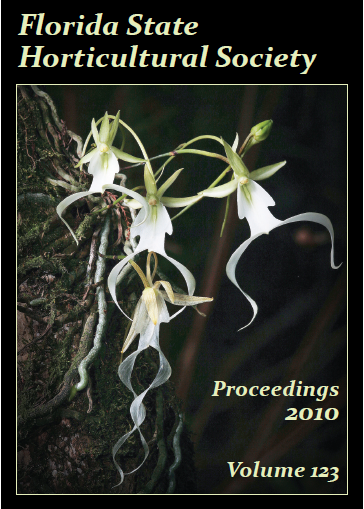Handling & Processing
Abstract
Lime slices are commonly added to beverages in the food service industry; little is known about microbial risks associated with this practice. The objective of this study was to determine survival of Salmonella spp. on lime slices stored on ice for 8 h then transferred to 4 °C or at room temperature. A five-strain cocktail of Salmonella [5 log colony-forming units (cfu) per slice)] was spot inoculated onto the flesh, flavedo, or albedo of sliced limes and held on ice or at room temperature for up to 24 h. Salmonella were enumerated by plating on selective agar during the 24-h storage. Salmonella inoculated onto the albedo and held at room temperature first decreased by 1 log cfu/slice within the first hour then grew back to 6 log cfu/slice. When inoculated onto either the flesh or flavedo and held at room temperature no significant difference was observed in the counts of Salmonella over the 24-h period; counts remained at ≈5 log cfu/slice. When stored on ice the initial Salmonella load (at time 0 h) was ca. 4.5 log cfu/slice and remained with no significant difference over the 24-h storage time. The demonstrated ability of Salmonella to survive on lime slices suggests a potential food safety risk associated with improperly handled sliced limes.References
- Jain, S., S.A. Bidol, J.L. Austin, E. Berl, F. Elson, M. Lemaile-Williams, M. Deasy, M.E. Moll, V. Rea, J. D. Vojdani, P.A. Yu, R.M. Hoekstra, C.R. Braden, and M.F. Lynch. 2009. Multistate outbreak of Salmonella Typhimurium and Saintpaul infections associated with unpasteurized orange juice—United States, 2005. CID 48:1065-1071.
- Loving, A. and J. Prez. 2007. Microbial flora on restaurant beverage lemon slices. J. Environ. Health 70:18–22.
- Pao, S., G.E. Brown, and K.R. Schneider. 1998. Challenge studies with selected pathogenic bacteria on freshly peeled Hamlin orange. J. Food Sci. 63:359–362.
- Zhoa, T., M.R.S. Clavero, M.P. Doyle, and L.R. Beuchat. 1997. Health relevance of the presence of fecal coliforms in iced tea and leaf tea. J. Food Prot. 60:215–218.

